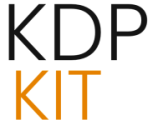
The Fabrication of Human Capital: AI-Generated Executive Profiles
A critical component of the sophisticated digital facade involved the creation of an entire executive and consulting team whose only existence was within the digital rendering of the website. The ‘Meet Our Team’ pages on the scam sites—which included operations like the near-identical *Melbourne Book Publisher* and its counterparts in the UK and New Zealand—were populated with photographs of individuals who were, in reality, entirely fictional constructs generated by artificial intelligence. These images frequently depicted “immaculately groomed white executives,” presenting a highly polished, albeit artificial, image of corporate leadership and experience. For the experienced professional in the Australian publishing world, the fact that none of the named individuals held any recognizable standing within established circles was a key giveaway. However, for a novice author, these profiles—featuring names like the supposed consultant “Kendrick Wilson” or executives such as “Jonathan Hale” and “Marcus Ellison”—lent significant, unearned credibility to the operation. The sheer audacity of the deception was laid bare when one of these supposed consultants, when questioned by an investigative journalist, denied the use of AI imagery, further highlighting the gaslighting potential of these digital forgeries. The swift removal of these AI-generated headshots upon journalistic inquiry, while an admission of the tactic, served only to underscore the dependency on this technology for initial deception. This tactic bypasses the most basic check: “Do I recognize anyone on their leadership team?” because the answer is designed to be “No, but they look exactly like who *should* be there.”
The Illusion of Success: Synthetic Testimonials and Stolen Credibility
Exploiting past successes, even if fabricated, is a staple of fraudulent marketing, and AI helped this network elevate this tactic to a dizzying new level. Beyond creating fake staff, the scammers employed testimonials that were either entirely synthesized by AI or, more shockingly, outright stolen from genuine authors. In a particularly egregious instance that shook the genuine Australian children’s author community, the photographic likeness and name of **Katrina Germein** were allegedly used on one of the sites to stand in for a satisfied client named “Sarah”. The fake testimonial read: “I was drowning in publishing confusion until I found Aussie Book Publishing,” adding, “Worth every single dollar invested”. This dual approach—creating new fake endorsements and appropriating real author credibility—created a thick layer of perceived social proof. Furthermore, the scam sites often claimed to have published a catalogue of real books, which were, in fact, legitimate self-published titles available on major platforms like Amazon. This created a misleading association between the scam entity and tangible published works. The illusion was maintained by stitching together real-world markers of success (actual book listings) with entirely false representations of their own involvement. It’s a digital collage designed to fool your professional judgment. Understanding the mechanics of this deception is key to developing better **authorial self-protection** strategies.
Case Studies in Deception: Narratives from Affected Australian Writers
The impact of this wide-ranging, technologically-assisted fraud is best understood through the lived experiences of the writers who fell victim to its meticulously constructed deceptions. These personal accounts reveal the specific points of failure in due diligence and the emotional toll exacted by the betrayal of trust inherent in the author-publisher relationship.
The Experience of the Determined Novelist: Financial Loss and Subsequent Realization
The narrative of an aspiring fantasy romance novelist, known pseudonymously as “Andrea,” recovering from cancer, starkly illustrates the manipulative depth of the scheme. Andrea engaged in a video conference with the supposed executive, **”Marcus Hale,”** who provided detailed, encouraging plans for her novel’s promotion, including social media strategy and a local launch event. This detailed engagement—the personal touch of a planned local launch—cemented her belief in the publisher’s commitment, leading her to lose money based on their fabricated requirements. Her realization of the fraud came only after she proactively contacted the legitimate **Melbourne Books**, discovering the near-identical name was a deliberate trap. Similarly, another author, **Peter Ortmueller**, engaged with the same entity, losing a sum he believed was an initial payment for a publishing package, having been convinced he was dealing with a traditional house. These losses, while perhaps modest in absolute terms—Andrea lost A$88 for a supposed ABN, Ortmueller lost A$150—represent a significant financial and emotional setback for authors often investing personal savings into their craft. When a publisher asks for money, it triggers a need for deeper vetting, a concept we explore more in our guide on understanding publishing contracts for beginners.
The Warning Sounded: The Role of Established Industry Figures in Raising the Alarm. Find out more about AI-generated publishing scam Australia.
The first line of defense against such a complex scam often comes from within the established community, and in this instance, the alarm was successfully raised by a figure deeply invested in the integrity of the industry. **David Tenenbaum**, the proprietor of the authentic **Melbourne Books** (established in 2000 and specializing in non-fiction), became the unwitting center of the confusion due to the scammer’s appropriation of his company’s name and ABN. His receipt of inquiries from authors who were actually clients of the fraudulent entity prompted him to investigate the digital operations targeting his reputation. Furthermore, external expertise was sought to articulate the technical red flags. Cybersecurity analyst **Ashish Nanda** from Deakin University’s Cyber Research and Innovation Centre provided technical commentary, noting discrepancies such as inconsistent branding, a claimed establishment date in the late nineties juxtaposed with a domain registration from mere weeks prior, and the presence of a wholly fabricated high rating on an external review platform like Trustpilot (the company had no actual reviews). This combination of industry insider awareness and technical analysis was crucial in rapidly exposing the scam’s underlying artifice. This case serves as a perfect illustration of why due diligence for writers must now include technical audits.
Identifying the Modern Quagmire: Five Essential Strategies for Authorial Self-Protection
Given the increased sophistication powered by artificial intelligence, the traditional rules of thumb for vetting publishing contacts must be rigorously updated. The following five principles represent a critical framework for any author seeking to protect their manuscript, their reputation, and their finances from these digitally enhanced predators.
Firstline of Defense: Scrutinizing Unsolicited Overtures and Payment Demands
A primary caution, echoed by professional author advocacy groups like the Australian Society of Authors (ASA), centers on unsolicited contact. If a company sends a “cold email” offering publication or extensive promotion, particularly if it claims your work has passed an “initial evaluation phase” without any prior submission, extreme skepticism is warranted. The key differentiator is **any request for payment from the author**. In genuine traditional publishing, the organization pays for all production and marketing costs; they do not request fees from the author for services like editing, design, or even administrative costs like securing an ABN. Any overture that immediately transitions to demanding funds for publishing packages should be treated as a high-risk scenario. Professional publishers rarely use generic email addresses like those ending in common free-to-use domains; look for correspondence originating from a verifiable, unique corporate domain name.
Verifying Corporate Identity: Cross-Referencing Registration Details and Operational History
Never rely solely on the information presented on a single website. A crucial step involves cross-verifying the claimed history against external, trusted databases.
- Check the Dates: Check the claimed year of establishment against the actual domain registration date; a company claiming decades of history with a domain registered last month is an immediate and non-negotiable red flag.. Find out more about How to spot fake publisher executive profiles guide.
- Validate Registration: Further validation should involve searching for the company’s registered name and ABN independently, outside of any links provided by the suspicious entity. If a company uses a name similar to an established publisher, immediately search for the established company’s official website and contact them directly to confirm or deny any association with the operation in question.
- Verify Book Listings: If a company claims to have published specific books, check major bookseller websites to see if that retailer explicitly lists the suspicious entity as the publisher of record, and if possible, preview the book’s interior information page.
- If a company promises extensive, proactive marketing *before* you pay them, treat it with suspicion. Legitimate houses invest their own capital; they don’t charge you upfront for the investment.. Find out more about Protecting authors from synthetic testimonial scams tips.
- If they claim they discovered your work “cold” via social media and instantly offered a comprehensive package, it’s a high-risk signal. Traditional publishers rely on established submission protocols or reputable agents.
- If the executive team looks *too* perfect, or if their claimed history stretches back decades while their website domain was registered last week, it’s a fabrication. Trust the cold, hard data over the polished veneer.
- Always conduct a reverse image search on any executive or testimonial photo provided. AI-generated faces will often yield no results or return a string of unrelated stock images.
- If an author testimonial uses the image of a real person, search that author’s name alongside the testimonial text. In the case of Katrina Germein, her name and image were co-opted, but a quick search would reveal her actual professional focus.. Find out more about Verifying publisher domain registration date red flags strategies.
- If you suspect a company like *Melbourne Book Publisher* is not the legitimate *Melbourne Books*, find the contact details for the *known, legitimate* company through an independent, trusted source (like an official industry body or Google Maps search).
- Call the legitimate number and ask directly: “Are you affiliated with [Suspicious Company Name]?” This single action saved authors like Andrea from further loss.
- Cross-reference any Australian Business Number (ABN) they provide with the official government register to confirm the name, status, and registered business address align with the website’s claims.. Find out more about AI-generated publishing scam Australia overview.
- NEVER Pay Upfront: Traditional publishers pay *you*; self-publishing companies charge you transparently. Any “package deal” disguised as a traditional contract is a major warning sign.
- Verify Externally: Independently check domain registration dates and ABNs. A mismatch between claimed age and domain age is a non-negotiable red flag.
- Check the Faces: Use reverse image search on every staff photo. AI-generated images will fail this test.
- Cross-Reference Names: If a company name is similar to an established one (like *Melbourne Book Publisher* vs. *Melbourne Books*), call the *known* entity directly to confirm no affiliation exists.
- Report Suspicion: If you encounter *any* of these red flags, report it to the Scamwatch reporting portal. Your report helps the National Anti-Scam Centre track and disrupt these international networks.
The lack of transparent, verifiable, and consistent corporate documentation across multiple official sources is an indicator of a synthetic operation. This level of detail is what separates success from being the next cautionary tale in **digital publishing scams**.
The ‘Too Good To Be True’ Test: Re-Evaluating Promises
The detailed promises made to victims—like “a presence on TikTok” and a local launch event for a fantasy romance novel—are AI-powered sugarcoating of the oldest scam in the book: vanity publishing disguised as a major contract.
The Testimonial Deep Dive: Reverse Image Search Everything
The most advanced element of this fraud was the misuse of real author identities. Your new defense against **AI-generated content** in corporate impersonation must include technical checks:
The Contact Confirmation Protocol: Phone and ABN Validation
Never trust an email address or a phone number provided *by the suspicious entity*.
Industry and Regulatory Response to the AI-Powered Threat
The discovery of this coordinated fraud initiated a significant response from both the institutions tasked with protecting authors and the regulatory bodies responsible for maintaining fair commerce within the nation. This collective reaction signals a recognition that technology has introduced new vectors for exploitation that require adaptive countermeasures.
The Stance of Professional Author Advocacy Groups
Organizations dedicated to supporting the rights and careers of writers were quick to mobilize. Groups like the Australian Society of Authors (ASA) issued formal warnings that highlighted the escalating sophistication of these scams due to AI integration. These groups emphasized the need for authors to adopt a mindset of careful interrogation, particularly when receiving approaches that bypass standard submission protocols. Their advice serves as a crucial educational tool, translating complex technological threats into clear, actionable principles for the creative community, essentially retraining authors to identify digitally enhanced deception. They advocate for authors to maintain an awareness that the tools making publishing more accessible to legitimate creators are also making it easier for bad actors to construct convincing illusions of opportunity.
Preliminary Investigative Actions by National Anti-Scam Authorities
The gravity of the situation, particularly given the financial losses incurred by several Australian writers, prompted formal intervention from official oversight bodies. Australia’s **National Anti-Scam Centre (NASC)** was officially engaged to investigate this complex case, acknowledging the international scope and the specific targeting of the local author base. The involvement of such a center signifies that the matter has moved beyond simple consumer complaint territory into the realm of coordinated, systemic fraud requiring specialized investigative resources. The ACCC Deputy Chair noted that “Technology is helping scammers reach more people than ever before and we see scams becoming more sophisticated and harder for people to detect”. Preliminary actions by the NASC would involve tracking the digital infrastructure—the domain registrations, payment processing trails, and social media presences—associated with the various aliases like *Melbourne Book Publisher* and its international counterparts. This official oversight is vital for building a comprehensive case that can potentially lead to the disruption of the entire operational network, rather than just taking down one of the many cloned websites. We encourage any affected writer to report these incidents to Scamwatch to aid this effort. This situation underscores the importance of staying informed on the latest **scam reporting procedures**.
Future-Proofing the Creative Journey: Evolving Defenses in a Technologically Advanced Landscape. Find out more about How to spot fake publisher executive profiles definition guide.
The current situation serves as a potent lesson: as technology evolves, so too must the vigilance of the creative professionals who use it. The battle against sophisticated digital scams is an ongoing arms race, requiring continuous education and proactive skepticism from the writing community to ensure that their ambitions are not preyed upon by deceptive algorithms.
Advocating for Digital Literacy in Creative Communities
Moving forward, a proactive educational framework centered on digital literacy must be integrated into every facet of writing development, mentorship, and community engagement. Authors, particularly those new to the industry, need comprehensive training that goes beyond identifying basic phishing attempts to understanding how AI-generated content is deployed in corporate impersonation. This involves teaching writers how to conduct effective reverse image searches on executive photos, how to trace domain registration records, and how to interpret the subtle discrepancies between a real company’s established digital footprint and a rapidly assembled, slick facade. Empowering authors with these technical investigation skills transforms them from passive targets into active auditors of the opportunities presented to them, fostering a more resilient creative marketplace. Learning basic **domain registration records** checks is now as vital as proofreading your manuscript.
The Ongoing Arms Race: Anticipating Next-Generation Publishing Scams
Finally, the entire literary ecosystem—authors, agents, established publishers, and regulatory bodies—must remain poised to anticipate the next iteration of this fraud. The scammers who utilized AI for fake staff photos and cloned sites will inevitably adapt their methods to circumvent the known red flags exposed in this recent wave. Future scams may employ more subtle AI manipulation, perhaps generating more authentic-looking, less perfectly groomed staff, or using sophisticated deepfake video conferencing to mimic genuine human interaction more convincingly than the initial video calls witnessed in this case. The defense strategy must therefore be dynamic, emphasizing fundamental, non-technical principles: if a promise sounds too good to be true, if you are asked to pay for what a traditional house would pay for, or if the identity of the company cannot be independently verified through official, non-affiliated sources, the default assumption must be one of high suspicion. This continuous reassessment of trust in digital interactions is the only way to safeguard the passion and financial investment of the next generation of storytellers. The entire apparatus of aspiring authorship must evolve to treat every unsolicited publishing opportunity with the due diligence reserved for a complex legal contract, recognizing that behind the gleaming digital surface may lie nothing more than a sophisticated, globally orchestrated deception.
Key Takeaways and Your Call to Action
The AI-powered publishing scam is a stark reminder that digital opportunity comes with digital risk. To stay safe, authors must become their own first line of defense. Actionable Takeaways for Every Author:
What is the single most surprising element of this AI-driven deception to you? Let us know in the comments below, and let’s keep this vital conversation going to protect the next wave of storytellers.









